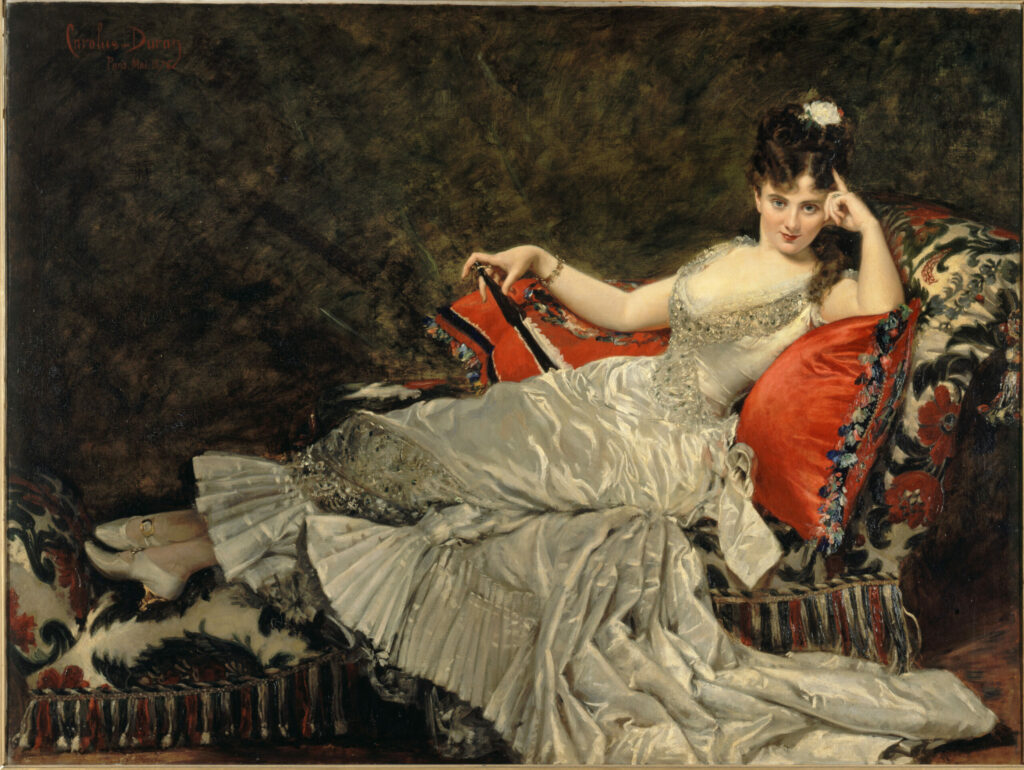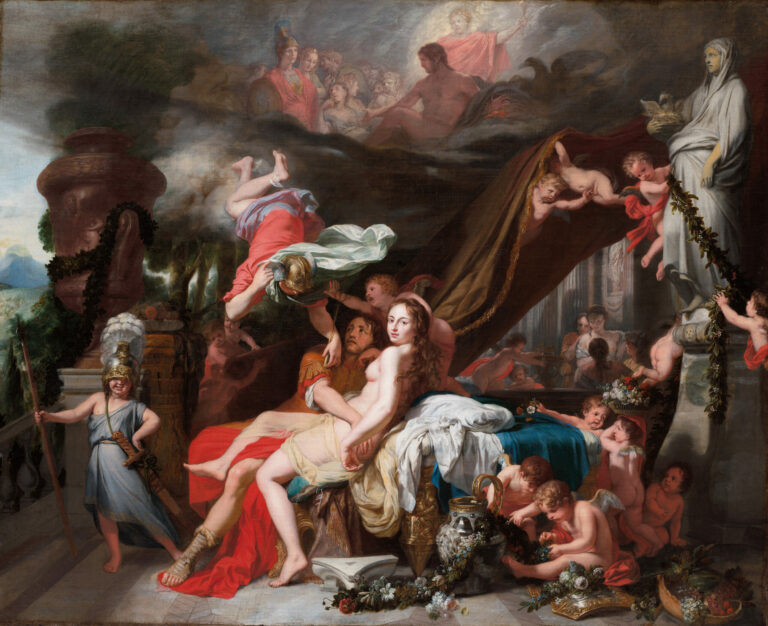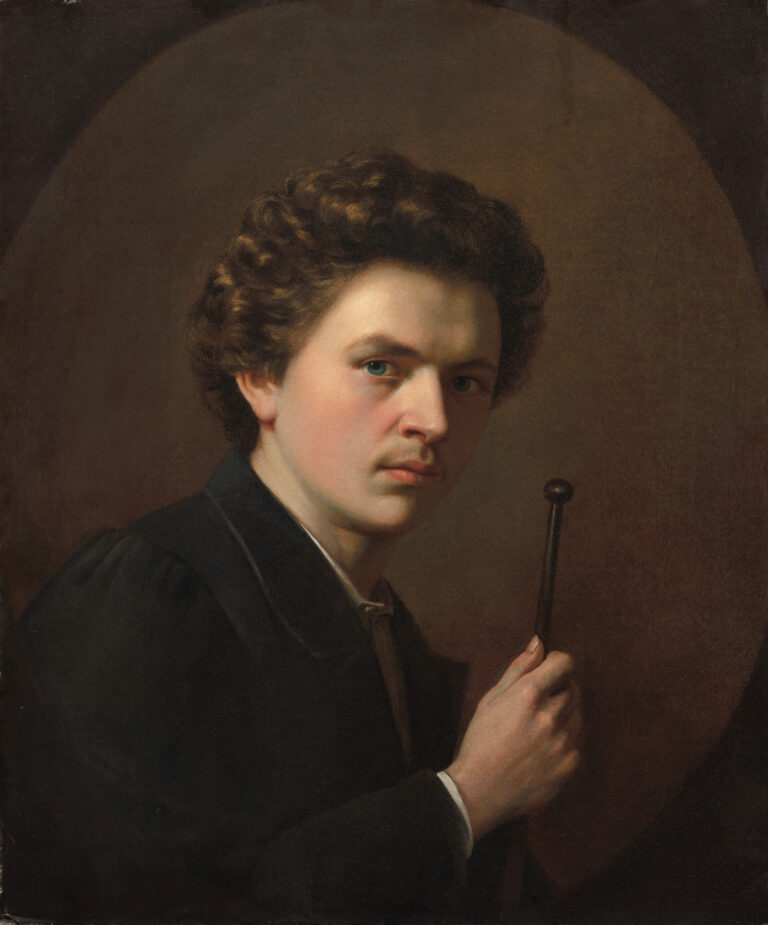
This work by Carolus-Duran, painted in 1876, stands as a veritable manifesto of Parisian elegance from the late 19th century.
The painter presents a woman in all her splendor, reclining on a sofa covered in red velvet and sumptuous floral-patterned fabrics.
The composition is dominated by the white satin dress, a technical tour de force in the rendering of textures and reflections. The folds of fabric, lace, and precious ornaments are treated with dazzling virtuosity, testifying to the artist’s absolute mastery. The contrast between the luminous white of the dress and the warm tones of the setting—particularly the deep red of the sofa—creates an atmosphere both intimate and theatrical. The woman’s pose, nonchalantly leaning on the divan, her head slightly inclined and supported by her hand, exudes a quiet confidence and natural grace characteristic of Parisian society of the period.
Luxury, refinement, and subtle sensuality merge in a work that celebrates both feminine beauty and the painter’s talent for capturing the essence of his time.
Further information
- Portrait of Mademoiselle de Lancey, by Carolus-Duran, 1876
- 157.5 x 211 cm
- Collections of the Petit Palais, Museum of Fine Arts of the City of Paris (exhibited in Ground Floor Garden Room 03), Paris Musées
- https://www.parismuseescollections.paris.fr/fr/petit-palais/oeuvres/portrait-de-mademoiselle-de-lancey
Carolus-Duran, born Charles Auguste Émile Durant (1837-1917), was one of the most prominent portraitists of the Third Republic. The master of John Singer Sargent, he directed the French Academy in Rome and was famous for his society portraits of the Parisian aristocracy and upper bourgeoisie. His virtuoso technique, influenced by Velázquez, is characterized by a free and confident brushstroke, bold chromatic harmonies, and an acute sense of his subjects’ psychology. His Parisian studio became an essential destination for elegant society of his time, eager to be immortalized by one who knew so well how to capture the spirit of this sumptuous era.






